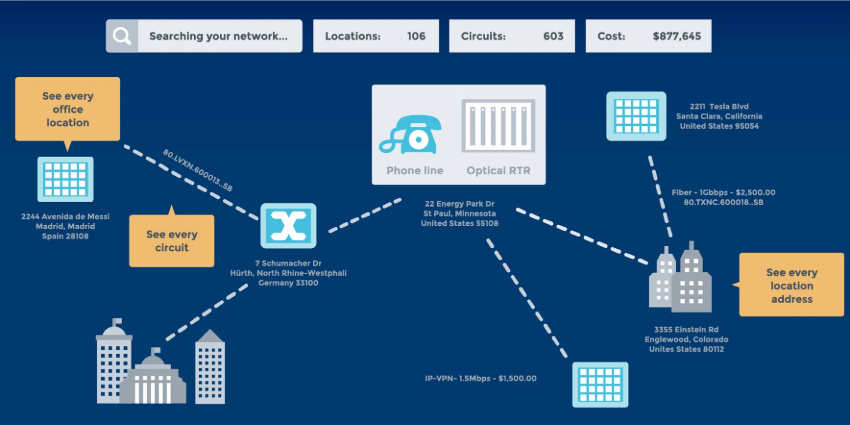Its been a remarkable few years as the UC and collaboration space has seen seismic changes in not only demand during and after the pandemic, nor just a need for bespoke operationality and responses to improvements in technology, but also in the radical new way we are all working and the repercussions for company cultures. Of course, this means opportunities for sellers.
According to India and US-based market research and consulting company Grand View Research, the global unified communications market was valued at $113.48 billion in 2022 and is forecast to expand at a “compound annual growth rate (CAGR) of 17.4% from 2023 to 2030”. Yahoo! Finance has it at a more modest, but still no less significant, $76.7 billion in 2022 to $141.6 billion by 2027.
With our latest Round Table topic, “UC in the Hybrid Workplace”, we spoke with executives and experts from Talkdesk, Smarsh, and Content Guru to look at strategies for business leaders, trends in the UC space, flexibility for organisation and live collaboration with the imminent possibility of a 4-day work.
What would UC technology strategies recommend to business leaders embracing a hybrid workplace model?

Robert Cruz, VP of Information Governance Solutions, Smarsh
Cruz explains that UC platforms today encompass a variety of modalities (e.g. voice, video, chat, whiteboards, analytics, etc.) that transformed work during the pandemic and that firms will continue to embrace a work-from-anywhere model.
Citing ideas for organisations to bear in mind, he says: “This creates three top considerations for firms to incorporate into their UC strategies: one, how can they enable a location-agnostic experience for workers that is uniform regardless of whether an employee is in office, at home, or on a mobile device in a remote location.
“Two, how can they choose which modalities they want to allow for use by employees based upon the existence of controls that provide visibility into the activities happening on these tools and three, how can they keep up with the never-ending stream of new features and innovations that, in some cases, are defaulted on and rolled out before firms can assess the benefits vs risks created to their businesses.”
Martin Taylor, Content Guru’s Co-Founder and Deputy CEO
Content Guru’s co-founder has his faith firmly in UCaaS. He declares:
“First and foremost, the best-unified communications (UC) technology strategy would be the cloud. Hybrid workplaces demand equal access to technologies, from collaboration and communication to general business applications. Everything is best accessed from a cloud environment.”
But it’s about more than just communication for Taylor; he adds: “Collaboration between the external-facing front office, which engages with customers, and the back office, which deals with day-to-day functions that enable a business to operate, is essential.
“Areas of the business including subject matter experts, accounting, legal, and HR are increasingly tending towards Microsoft Teams as a standard collaboration environment. Therefore it is imperative that the technology environment of the front office can integrate with Teams, particularly to see the availability of back-office colleagues so that communications and questions from customers can be transferred, when appropriate.”
Alain Mowad, Product Marketing Director, Talkdesk
Mowad advises: “Leaders should be looking to consolidate their UC tech stack and move all UC services to the cloud. Consolidating their tech stack will drive down costs for acquiring and supporting their UC solution and simplify management of the solution across all users.
The Talkdesk executive explains, “By upgrading from a legacy on-premises UC or hosted/managed system to a cloud-native UCaaS solution, they can support work from anywhere, onsite or remote, and instantly scale as new users are onboarded. They can also simplify onboarding procedures to get users acclimated to the solution more quickly and at a lower cost.”
What UC trend do you think is reshaping or supporting the hybrid workplace the most …and why? (Example trends: AI; Cloud-based UC; Improvements in performance using SD-WAN; Personalized customer interaction security; Virtualization)

Martin Taylor, Content Guru’s Co-Founder and Deputy CEO
Taylor points to the current top-rated hub of communication and collaboration as the present key mover and says:
“The single biggest UC trend reshaping the hybrid workplace is Microsoft Teams.”
He explains: “So many end-user organisations have adopted it as their standard communications software. It is now a question for UC to offer tight integration into Teams and to provide value in other areas, especially the external-facing communications environment.
Taylor continues: “This includes contact centres and customer experience technologies which by their complexity operate outside of MS Teams, and yet must integrate closely with Teams in order to facilitate collaboration between front-office and back-office colleagues.
“Underpinning this transformative technology are further technologies such as cloud-based operation (CloudOps) and modern network architecture.”
Alain Mowad, Product Marketing Director, Talkdesk
Mowad believes the ongoing trend is towards UCaaS migration because it is reshaping how IT leaders can respond to and support a hybrid and distributed workforce.
He remarks: “UCaaS changes the game when it comes to hybrid work by giving IT leaders the flexibility to enable users to collaborate and work from anywhere, whether it’s a physical office, a home office or other remote location. Additionally, users can collaborate using any device, such as a computer, tablet or mobile phone, giving them increased flexibility for where and how they collaborate.
He backs his comments up: “That flexibility extends to IT leaders who can manage and monitor their environment from anywhere using any device. Further, UCaaS solutions provide IT leaders with the ability to easily and dynamically scale their operations, adding users and capacity as needed.”
Robert Cruz, VP of Information Governance Solutions, Smarsh
The Smarsh executive cites a trio of industry behaviours. Listing them, he says: “We see three trends reshaping the workplace the most: one, cloud, as UC platforms today are richer, more significant, and generating an enormous amount of heterogeneous data. This is causing in-house UC platforms to strain under data volume growing at exponential rates, accelerating cloud adoption.
Cruz continues: “Two, the operationalising of artificial intelligence and NLP-driven applications as UC become more focused on collaborative decision-making.
“And three, the drive toward integration and leveraging UC platforms as aggregation points of other social and mobile applications. This is causing an increase in investment in the leverage of APIs that ensure that UC platforms can share conversations, assets, and collaborative features across diverse systems.”
How important is flexibility when facilitating companies and organisations with hybrid workplace models — and why would you say this is?

Robert Cruz, VP of Information Governance Solutions, Smarsh
Cruz impresses the need for movement; he begins:
“Flexibility is imperative as we are still nowhere near consensus — within individual firms and across industries — of what a hybrid model will entail in the short and long term. The battle between executives pushing for a faster return to the office and staff enjoying the freedom and flexibility of remote work is long from settled.”
Cruz advises: “UC platforms must move toward enabling a location-agnostic experience for staff in office 1-to-4 days per week, fully on-site, as well as those remote. We are not there yet, but progress is being made incrementally.”
“Broader changes will be coming as more firms begin to redesign work not around the notion of physical space, but around providing the tools to enable individuals to get their jobs done. Similarly, firms’ controls must adapt to hybrid models, ensuring they are effective regardless of the employee’s location.”
Alain Mowad, Product Marketing Director, Talkdesk
“Flexibility is essential for users and IT admins, as both comprise the hybrid workforce of today. Users require flexibility to work from one or multiple locations with access to collaboration tools via their preferred or available device,” says Talkdesk executive Mowad.
Highlighting the importance of access, whether being in an office or not, Mowad continues: “Similarly, IT admins are no longer tethered to a physical location and must have full access to their UCaaS environment from wherever they’re working — and on any device — to support users with onboarding, configuration changes, or troubleshooting around issues.”
He concludes: “Importantly, users and admins need the flexibility to communicate from anywhere globally, so leveraging a UCaaS solution that offers a truly global communications and interconnectivity infrastructure is key to ensuring everyone can connect and collaborate anywhere in the world they happen to be. ”
Martin Taylor, Content Guru’s Co-Founder and Deputy CEO
Taylor makes a critical connection and says: “Flexibility should be synonymous with hybrid workplace models. Employee demands for hybrid working, which predates the recent pandemic, have always gone hand in hand with requests for flexible working, such as flexibility of hours and days worked, as well as work style.
Despite this, Taylor remarks that business relates to service and that this is crucial. He remarks:
“At the same time, the overriding priority of organisations will always be to serve its customers. Therefore, flexibility means striking a balance between the customer-oriented demands of the organisation and the personal wishes and expectations of its employees.”
He concludes: “Technology has a role to play, of course. However, securing a cohesive, flexible strategy is essential for hybrid workplace models.”
What do you see being the most adopted tools and solutions to engage in UC and live collaboration as we see the possible implementation of the 4-day work week?
Alain Mowad, Product Marketing Director, Talkdesk
Mowad sees a change in requirements and says: “We’re seeing a shift in collaboration preferences as businesses continue to gravitate towards a hybrid work model. This impacts how users work internally, as well as how they engage with their customers.”
He focuses on the specifics and explains:
“Instead of voice-only communications, businesses rely much more on chat, video conferencing, and remote collaboration tools to get work done, as they look to extend traditional in-person collaboration workspaces to support the inclusion of remote workers.”
The Talkdesk Product Market Director concludes: “We expect growing adoption of virtual whiteboards to brainstorm and share ideas, group collaboration workflow tools to support and coordinate online and offline work, group document and asset editing tools, and even virtual collaboration room experiences that bring together workers in one or multiple offices.”
Martin Taylor, Content Guru’s Co-Founder and Deputy CEO
“Calls for a 4-day work week were very much a feature of the first half of 2022,” says Martin Taylor, “which we will all remember as the age of ‘the great resignation’.
He predicts the next year: “For 2023, and the immediate future, organisations’ focus is of a more existential nature as developed economies work to fight off a deep recession. Recession, and its usual companion unemployment, should substantially lessen the demands for concessions, such as the 4-day work week, as businesses struggle to survive and thrive. Many will wonder if five days is enough!
“Nevertheless, businesses should be prepared for the upswing that will eventually follow by implementing cloud-based technologies and integrated collaboration and communication tools that will allow their workforces to operate anytime and from anywhere.”
Robert Cruz, VP of Information Governance Solutions, Smarsh
Cruz points to a simple formula and says:
“The tools that are seeing the strongest adoption are those that make it easiest to get one’s job done.”
The Smarsh executive explains: “This means everything from speeding response time to a client question, being able to talk to a colleague in a different time zone, and enabling workgroups to collaboratively author and distribute work product. The adoption of tools like Microsoft Teams are providing capabilities that allow firms to realize tangible cost savings, productivity improvement, and greater responsiveness to clients.”
Cruz details that the adoption of such setups works for companies on either side of the pandemic; he concludes: “For firms that began their journey toward digital transformation prior to the pandemic with departmental-level pilots, this has allowed them to accelerate their firm-wide deployment plans. For those forced onto collaborative platforms because of the pandemic, they have now seen the results and are not likely to return to their old ways of doing business.”







